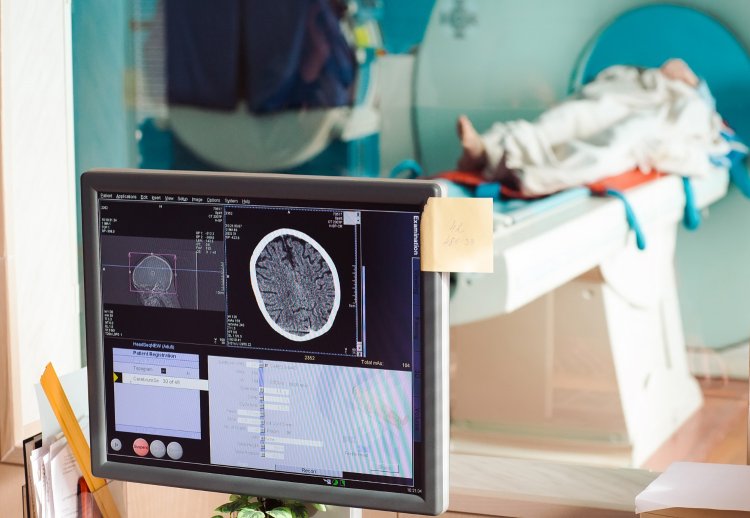Global Spatial OMICS Market Size to Reach $424.2 Million at a CAGR of 10.5% by 2030
Vantage Market Research expects the Spatial OMICS Market to reach USD 424.2 Million by 2030, exhibiting a growth rate (CAGR) of 10.5% during 2023-2030.

The Global Spatial OMICS Market size reached USD 210.9 Million in 2022. Vantage Market Research expects the market to reach USD 424.2 Million by 2030, exhibiting a growth rate (CAGR) of 10.5% during 2023-2030.
Table of Content [TOC]
|
|
|
|
|
|
|
|
Exploring the Next Frontier: The Rise of Spatial Omics in Genomics and Biotechnology
Spatial Omics is a new field in genomics and biotechnology that focuses on understanding the spatial organization of genes and proteins in complex biological systems. It involves using advanced imaging and computational methods to map the molecular composition of tissues and organs in three dimensions, providing a detailed view of the spatial relationships between cells and their molecular constituents.
Request Sample Report of Spatial Omics Market @ https://www.vantagemarketresearch.com/spatial-omics-market-2235/request-sample
The importance and relevance of Spatial Omics in genomics and biotechnology cannot be overemphasized, as this field has revolutionized our understanding of biological systems. It has enabled scientists to gain insights into the molecular mechanisms that underlie complex biological processes such as development, tissue regeneration, and disease progression. Spatial Omics has also enabled the development of new diagnostic tools, drug discovery strategies, and personalized medicine approaches.
Spatial Omics technologies combine high-throughput molecular profiling techniques such as genomics and mass spectrometry imaging. These technologies allow scientists to map the location and activity of specific genes and proteins within tissues and organs, creating a detailed and accurate picture of biological processes at the molecular level.
Market Growth Potential
The Global Spatial Omics market has emerged as a promising field of research and development in recent years, with the advent of new technologies that enable the study of molecular dynamics and interactions in living systems at a spatial resolution. Spatial Omics is a technology that enables researchers to map the spatial distribution of proteins, nucleic acids, and metabolites in cells and tissues, providing a new level of understanding of cellular processes and functions. Key drivers of Spatial Omics market growth include increasing investments in life science research, rising demand for innovative omics technologies, and growing application areas of Spatial Omics in personalized medicine and drug discovery.
The potential applications of Spatial Omics technologies are vast, ranging from cancer biology and immunology to synthetic biology and neuroscience. Spatial Omics technologies are also finding applications in synthetic biology, where they can help design and engineer synthetic biological systems with functional precision. The healthcare industry is one of the key beneficiaries of Spatial Omics technologies, as it offers tremendous potential in personalized medicine and precision diagnostics. While the Spatial Omics market has significant growth potential, stakeholders may need help with the complexity of data analysis and the need for extensive computational resources. Additionally, there is a need for standardization and validation of Spatial Omics technologies to ensure their reproducibility across multiple laboratories.
Technological Advancements and Innovations
Advancements in the global Spatial Omics market have revolutionized the field by offering innovative approaches to analyze complex biological systems. New cutting-edge techniques, platforms, and tools are emerging regularly in the Spatial Omics field. For instance, microdissection coupled with mass spectrometry enables single-cell measurements of protein and RNA expression in specific cells from complex tissues. In situ, hybridization technologies and single-cell RNA sequencing also increase data resolution, scope, and throughput. Moreover, other novel platforms and tools like systems biology (predictive modeling to interpret Spatial Omics data) and cell atlas resources (human organ and tissue maps) in the Spatial Omics field have significantly improved the data resolution, analysis, and visualization.
Buy Now Our Spatial Omics Industry Report @ https://www.vantagemarketresearch.com/buy-now/spatial-omics-market-2235/0
Potential Future Developments and Their Implications
Future developments in Spatial Omics will further drive advances in biomedical research. Spatial Omics technologies will enable scientists to develop a comprehensive understanding of the varied complexity of biological systems, leading to novel therapeutic strategies for human diseases.
Several potential future developments and their implications in the Spatial Omics field exist. These include -
- Multi-omics Integration: Multi-omics Integration enable the simultaneous analysis of proteins, RNA, and metabolites at a single-cell resolution.
- Intelligent Imaging Systems: Intelligent Imaging Systems can allow for real-time visualization of Spatial Omics data and analysis.
- Genome Editing Technologies: Genome Editing technologies like CRISPR/Cas9 can enable precise manipulation of cells in tissues, leading to powerful capabilities for disease modeling and drug discovery.
The global Spatial Omics market is a rapidly growing field with immense potential to transform healthcare, pharmaceuticals, and research. Spatial Omics technologies enable us to understand tissue architecture, identify cellular interactions, and investigate disease mechanisms in unprecedented detail, thus paving the way for more effective treatments and personalized medicine.
Key Applications of Spatial Omics
- Spatial Omics in Research
Spatial Omics technology has vital applications in research, helping researchers identify new biomarkers or disease targets. It also helps researchers understand the underlying mechanisms of disease pathogenesis, thus paving the way for developing new therapies. Several case studies have shown the success of Spatial Omics technologies. For instance, Spatial Omics were used to identify the cellular mechanisms that drive tumor progression. Another study showed how Spatial Omics enabled researchers to map the human brain’s cellular architecture, uncovering previously unknown circuitry.
- Spatial Omics in Healthcare
One of the major applications of Spatial Omics is in the healthcare industry. It helps in the diagnosis and treatment of various diseases by identifying the altered gene expression patterns in tissues. Spatial Omics technology enables physicians to identify the cells responsible for certain diseases and generate personalized treatments. It also helps in guiding drug discovery and drug development.
- Spatial Omics in Pharmaceuticals
Pharmaceutical companies are increasingly adopting Spatial Omics technology to identify new drug targets and assess drug efficacy. Spatial Omics also plays a significant role in drug development, helping pharmaceutical companies reduce the time and cost associated with drug development.
Regulatory and Ethical Considerations
As the Spatial Omics market grows, regulatory and ethical considerations become increasingly important. Using Spatial Omics data requires strict protection measures to maintain privacy and prevent misuse. Additionally, there is a risk of misinterpretation of data and potential ethical issues that need to be addressed. Regulatory bodies, including the EMA and FDA, closely monitor the development and use of Spatial Omics technologies. The FDA has approved several Spatial Omics applications for clinical use, including Illumina's NextSeq 550Dx system for clinical sequencing.
Conclusion
The global Spatial Omics market shows strong growth potential due to the increasing demand for precision medicine and targeted therapy. Regulatory and ethical considerations are vital as the market continues to evolve. The Spatial Omics market is expected to grow with the increased focus on personalized medicine and technological advancements. The technology is still in its early stages of development, but the future looks promising with several emerging trends and future developments. Adherence to ethical standards and responsible data management is critical for future Spatial Omics’ success.
Read Our Latest Press Release: Smart Highway Market - In-depth Analysis
Contact us
Eric Kunz
6218 Georgia Avenue NW Ste 1 - 564
Washington DC 20011-5125
United States Tel: +1 202 380 9727
Email: [email protected]
Website: Vantage Market Research


















